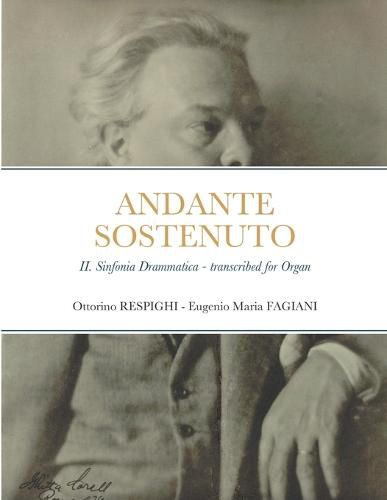Readings Newsletter
Become a Readings Member to make your shopping experience even easier.
Sign in or sign up for free!
You’re not far away from qualifying for FREE standard shipping within Australia
You’ve qualified for FREE standard shipping within Australia
The cart is loading…






This title is printed to order. This book may have been self-published. If so, we cannot guarantee the quality of the content. In the main most books will have gone through the editing process however some may not. We therefore suggest that you be aware of this before ordering this book. If in doubt check either the author or publisher’s details as we are unable to accept any returns unless they are faulty. Please contact us if you have any questions.
Unanimously considered a master of orchestration, even before being a great symphonic composer, Ottorino Respighi was a cosmopolitan musician from a young age. After studying composition with Giuseppe Martucci in Bologna, he had crucial lessons with Nikolai Rimsky-Korsakov. His Sinfonia Drammatica is the only composition he wrote in the form of a symphony (the Roman triptych - Pini di Roma; Fontane di Roma; Feste Romane - it is in fact a series of symphonic poems). It is a large page (lasting about an hour), in three movements completed in 1914, which reflects in itself a series of influences such as those of Rinsky-Korsakov, Scriabin, Franck, Mahler, Wagner, Bruckner, Debussy, Reger and Strauss. The second movement Andante sostenuto, particularly serious and dramatic, reveals a certain familiarity with Debussy and with references to Franck's Trois Chorals. It is the shortest movement (lasting about 17 minutes) of the symphony. Built on three contrasting ideas, it presents, after a cantabile introduction and a second section in pastoral guise, a sort of choral (in the Franck manner) in the low register of trombones and a second time, in the reprise, in the strings section. Then there is an interesting fugue where the choral theme is re-proposed as cantus firmus (with a marked reference to similar treatments made by Reger). For all these reasons I believe that this movement, which moreover I particularly love, is specially linked to the sound and to the world of the organ, hence the desire to elaborate it. The score I created presents only a few indications of a proper registration, however it retains all the dynamic signs of the original (in addition to this there are in the same points the indication of the families of instruments, as in the original score, that are engaged in the specific passage) which will result in allowing the attentive musician to orient oneself in an extremely refined orchestral writing.
$9.00 standard shipping within Australia
FREE standard shipping within Australia for orders over $100.00
Express & International shipping calculated at checkout
This title is printed to order. This book may have been self-published. If so, we cannot guarantee the quality of the content. In the main most books will have gone through the editing process however some may not. We therefore suggest that you be aware of this before ordering this book. If in doubt check either the author or publisher’s details as we are unable to accept any returns unless they are faulty. Please contact us if you have any questions.
Unanimously considered a master of orchestration, even before being a great symphonic composer, Ottorino Respighi was a cosmopolitan musician from a young age. After studying composition with Giuseppe Martucci in Bologna, he had crucial lessons with Nikolai Rimsky-Korsakov. His Sinfonia Drammatica is the only composition he wrote in the form of a symphony (the Roman triptych - Pini di Roma; Fontane di Roma; Feste Romane - it is in fact a series of symphonic poems). It is a large page (lasting about an hour), in three movements completed in 1914, which reflects in itself a series of influences such as those of Rinsky-Korsakov, Scriabin, Franck, Mahler, Wagner, Bruckner, Debussy, Reger and Strauss. The second movement Andante sostenuto, particularly serious and dramatic, reveals a certain familiarity with Debussy and with references to Franck's Trois Chorals. It is the shortest movement (lasting about 17 minutes) of the symphony. Built on three contrasting ideas, it presents, after a cantabile introduction and a second section in pastoral guise, a sort of choral (in the Franck manner) in the low register of trombones and a second time, in the reprise, in the strings section. Then there is an interesting fugue where the choral theme is re-proposed as cantus firmus (with a marked reference to similar treatments made by Reger). For all these reasons I believe that this movement, which moreover I particularly love, is specially linked to the sound and to the world of the organ, hence the desire to elaborate it. The score I created presents only a few indications of a proper registration, however it retains all the dynamic signs of the original (in addition to this there are in the same points the indication of the families of instruments, as in the original score, that are engaged in the specific passage) which will result in allowing the attentive musician to orient oneself in an extremely refined orchestral writing.